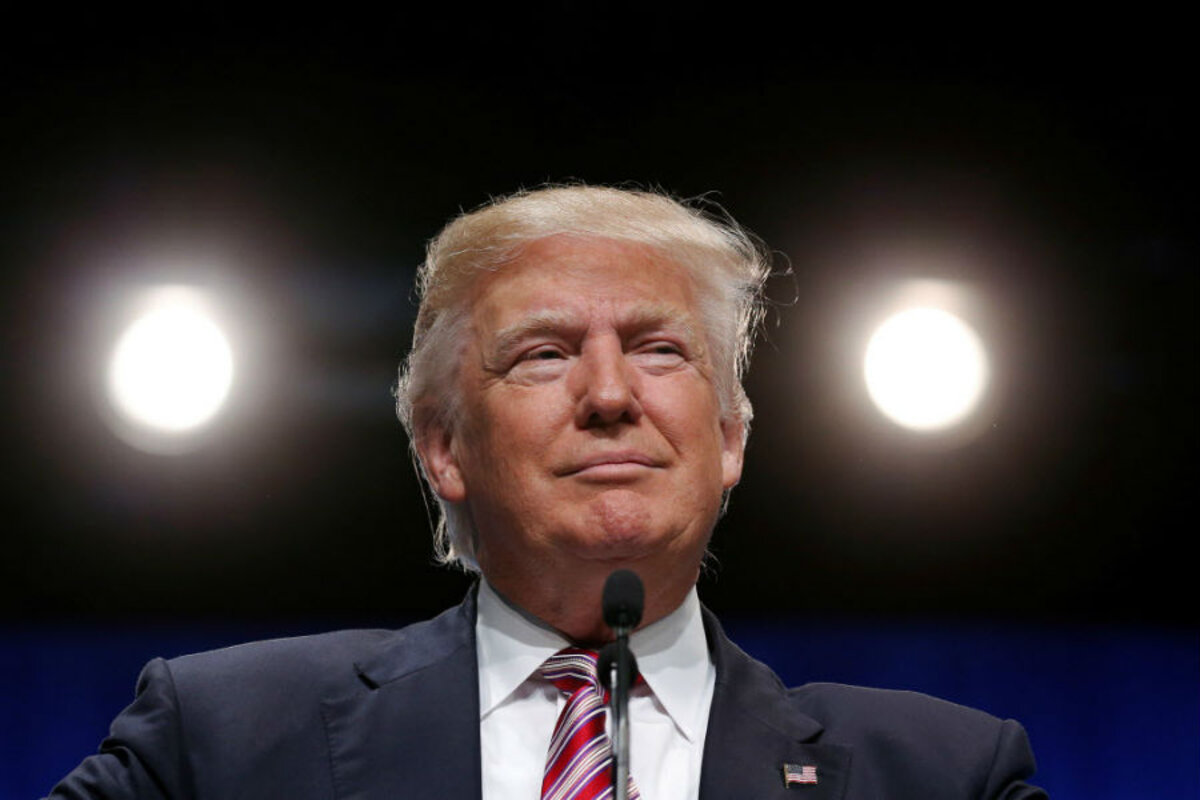Trump's take on college affordability
Loading...
Donald Trump has been pretty quiet on the subject of college affordability and student debt.
The Republican presidential candidate addressed the topic once in his last week at the 2016 Republican National Convention, saying,��“We’re going to work with all of our students who are drowning in debt to take the pressure off these young people just starting out their adult lives.”
The Trump campaign has not released a comprehensive higher education plan and did not respond to our repeated requests for comment about his views on the topic.
But you likely are wondering what a potential Trump presidency would mean for future college students and student loan borrowers. Here’s what we found from a May interview by the website with Sam Clovis, Trump’s policy director — it’s one of the few published interviews about Trump’s higher education ideas — and from the .
Any proposed changes to the current federal student loan system would require congressional backing and action.
1. Private banks — not the government — might issue federal student loans
Trump wants to restore a system in which private banks issue federal student loans, Clovis told Inside Higher Ed. The Republican Party platform also calls for the federal government to stop originating student loans.
Private banks used to issue federally backed student loans until 2010, when the federal government revamped the program and began originating all federal student loans through its Direct Loan program. The Obama administration cited billions of dollars in cost savings as a reason for the switch, and used the savings to offer more Pell Grants for low-income students. Today, most new student borrowing comes from federal direct loans, with private lenders servicing the government-issued loans.
2. Students’ prospective future earnings could inform their ‘loan worthiness’
Trump also wants to let colleges have a say in lending decisions and make them share the risk of student borrowing with lenders, according to the Inside Higher Ed article. It would be up to the colleges and banks to decide together which students could borrow student loans, Clovis said. The decision would be based on factors including the student’s major, choice of college and the potential to find a job after graduating.
For example, students pursuing majors with high post-college employment rates, such as engineering and health care, might be approved to take on more student debt than those studying liberal arts topics. Today, any student — regardless of his or her planned major — can borrow the same amount of federal student loans each year.
The idea that colleges should have “skin in the game” by taking responsibility for student outcomes has bipartisan support. For example, Sen. Jack Reed, D-R.I.,�� that would require colleges that accept federal financial aid to share student loan risk with the Department of Education.
3. There would be no free-tuition policy
Trump opposes presumptive Democratic Party presidential nominee , including her plan to make community college free, Clovis said.
Clovis questioned how the government would pay for debt-free college, and said free community college is unnecessary because it’s already “damn near free” now. “Almost anyone can afford community college,” he added.
������ԳٴDz�’s�� she would fund her higher-education proposals by “limiting certain tax expenditures for high-income taxpayers.”
4. You could use federal financial aid to cover nontraditional education programs
There should be more technical schools, online education courses and work-based learning programs, according to the Republican Party’s education platform. Public policy should “recognize that a four-year degree from a brick-and-mortar institution is not the only path toward a prosperous and fulfilling career,” the platform says.
Higher-education programs’ accreditation “should be decoupled from federal financing,” the platform adds. That may mean that students attending those nontraditional programs could be allowed to pay for the courses with federal financial aid. Currently, only students attending schools that are accredited through the Department of Education can qualify for federal financial aid.
What college students and loan borrowers can do now
Students seeking financial aid should fill out the Free Application for Federal Student Aid each year they’re in school. Submitting the is required by those who want to be considered for grants, scholarships, work-study jobs and federal student loans.
Borrowers with existing student loan debt have several options for managing it, including ,�������Ի���.
Teddy Nykiel is a staff writer at NerdWallet, a personal finance website. Email:teddy@nerdwallet.com. Twitter: .
This article first appeared at .




